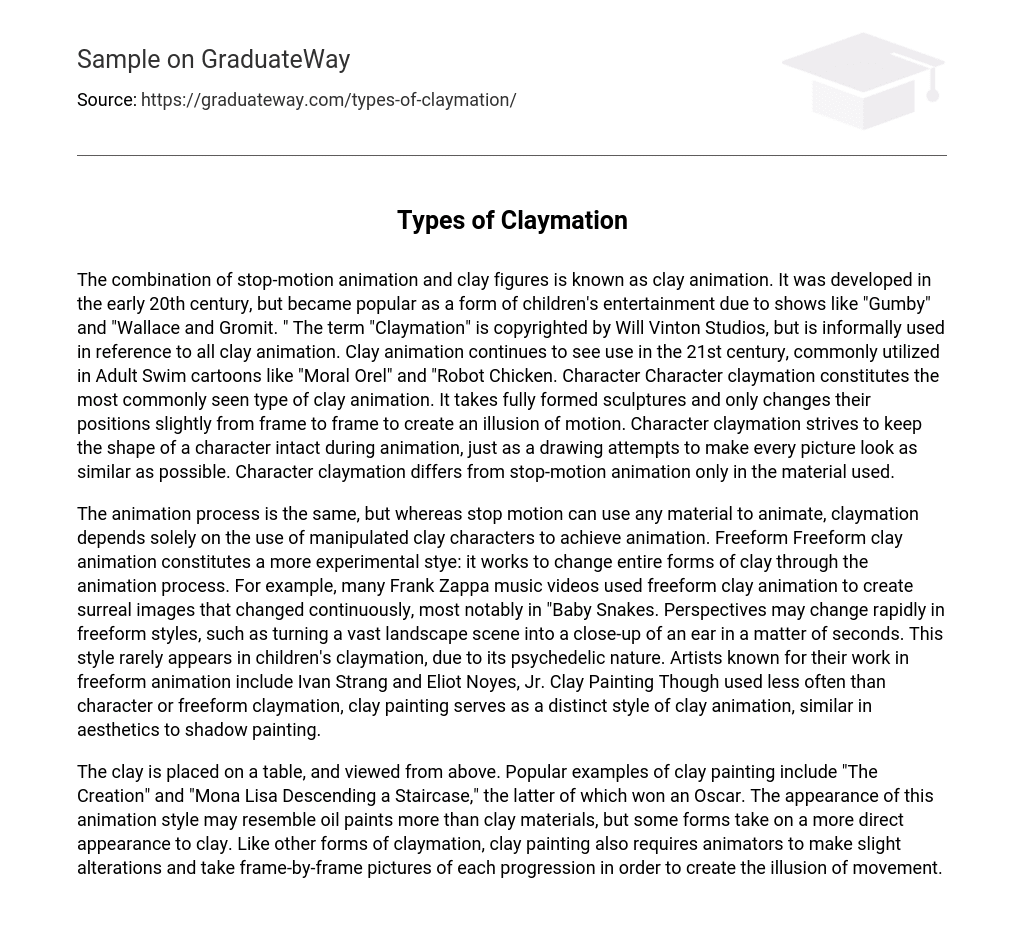The combination of stop-motion animation and clay figures is known as clay animation. It was developed in the early 20th century, but became popular as a form of children’s entertainment due to shows like “Gumby” and “Wallace and Gromit. ” The term “Claymation” is copyrighted by Will Vinton Studios, but is informally used in reference to all clay animation. Clay animation continues to see use in the 21st century, commonly utilized in Adult Swim cartoons like “Moral Orel” and “Robot Chicken. Character Character claymation constitutes the most commonly seen type of clay animation. It takes fully formed sculptures and only changes their positions slightly from frame to frame to create an illusion of motion. Character claymation strives to keep the shape of a character intact during animation, just as a drawing attempts to make every picture look as similar as possible. Character claymation differs from stop-motion animation only in the material used.
The animation process is the same, but whereas stop motion can use any material to animate, claymation depends solely on the use of manipulated clay characters to achieve animation. Freeform Freeform clay animation constitutes a more experimental stye: it works to change entire forms of clay through the animation process. For example, many Frank Zappa music videos used freeform clay animation to create surreal images that changed continuously, most notably in “Baby Snakes. Perspectives may change rapidly in freeform styles, such as turning a vast landscape scene into a close-up of an ear in a matter of seconds. This style rarely appears in children’s claymation, due to its psychedelic nature. Artists known for their work in freeform animation include Ivan Strang and Eliot Noyes, Jr. Clay Painting Though used less often than character or freeform claymation, clay painting serves as a distinct style of clay animation, similar in aesthetics to shadow painting.
The clay is placed on a table, and viewed from above. Popular examples of clay painting include “The Creation” and “Mona Lisa Descending a Staircase,” the latter of which won an Oscar. The appearance of this animation style may resemble oil paints more than clay materials, but some forms take on a more direct appearance to clay. Like other forms of claymation, clay painting also requires animators to make slight alterations and take frame-by-frame pictures of each progression in order to create the illusion of movement.





